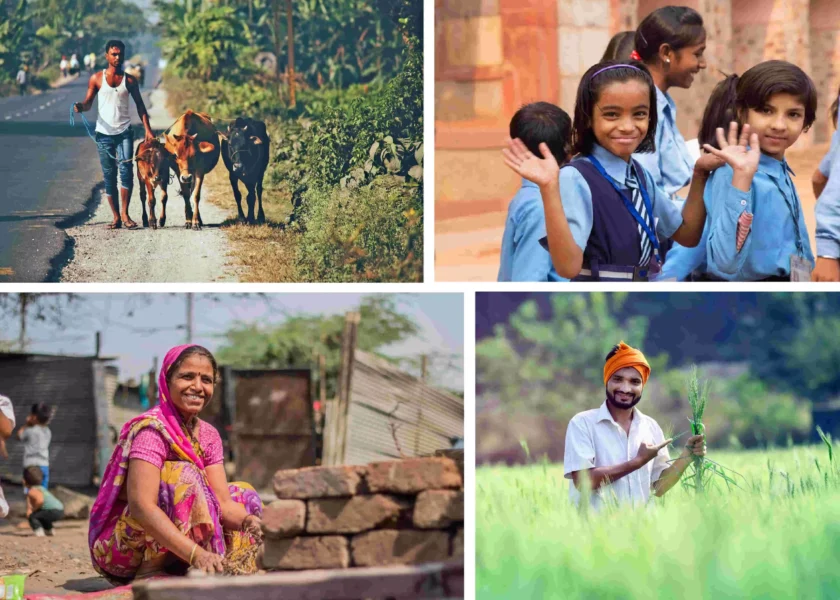The latest world happiness report has come out and Finland has once again been ranked as the happiest country. The Nordic countries along with Switzerland, New Zealand, Netherland and Iceland have traditionally occupied the top positions in the happiness index. This is probably due to the welfare state model that they have which provides a high degree of social security to its citizens in addition to high per capita income. India has improved its rank from the previous year and has come 126th but this low rank which India has been getting consistently over the last ten years since the world happiness reports started is a matter of concern. To a large extent this is difficult to believe and explain since India ranks lower than even Pakistan, Bangladesh and Nepal. However, over the last ten years India has remained at the bottom percentile of the happiness index. This is indeed a distressing situation and it is easy to go into denial mode and dismiss the findings as being due to faulty methodology or western bias. In fact, this is exactly the tenor of a spate of recent articles on this subject that have appeared in the media. However, the right approach would be to attempt to diagnose the problem so that the policy makers may be guided in designing better policies to improve the happiness quotient of the people.
Gross domestic product or GDP is no longer considered to be a comprehensive measure of the level of well being of the people though most countries are obsessed with the data on GDP growth rate. Various other indicators are used to assess the subjective well being of people like the human development index which factors in indicators on health and education along with per capita income to indicate the level of development of a country. The happiness index goes beyond this on the basis of a Gallup poll using questionnaires in which people are asked to rank themselves from 1 to 10 across various parameters to arrive at a happiness index score. The latest measure being used by most progressive countries is to compute gross national happiness (GNH) of its people rather than focus merely only on GDP. This concept of GNH originated from the mountain kingdom of Bhutan whose king decided that he would like to focus on all aspects of well being of his people and to measure this a detailed analysis was done to arrive at gross national happiness. The United Nation has also recognized the importance of happiness and declared 20th March as a World Happiness Day. The world happiness reports which started being released from 2013 onwards have analysed the factors influencing the happiness every year and arrived at a ranking of countries on happiness index. The essence of this index is that happiness is not only a factor of material well being but includes several non economic, social and psychological factors which can be measured through a well designed survey. The common factors which are taken into account while calculating the happiness score of the nation are GDP per capita, social support, healthy life expectancy, freedom to make life choices, generosity and perception of corruption. Ranking also takes into account the positive feelings like joy, peace, calmness and negative feelings like sadness which a person may feel while comparing his present condition to the immediate past. This is indeed a very comprehensive analysis and it cannot be denied that it does give a very concrete picture of well being of the people.
India is growing at seven percent per annum in the current year and is one of the fastest growing economies in the world. India has also become the fifth largest economy and is poised to leave Germany and Japan behind and become the third largest economy in the world with GDP of about five trillion dollars. However, it is not GDP per se which is relevant but GDP per capita which is a more important factor and India ranks poorly on this indicator even if we use the purchasing power parity. Consistently, India has been ranked beyond 100 on GDP per capita index and this is perhaps the main reason which pulls down the ranking of the country in the happiness index. This should provide immediate material for thought for our policy makers who should focus on reduction of inequalities and inclusive growth. This would mean that the country should give the highest importance to the areas of education and health which would help in strengthening the human capital and also enable its citizen to participate on a equal footing socially, culturally, politically and, of course in the economic sphere.
India is a complex country where along with economic inequality there are factors like inequality of caste, gender and family background account for lower levels of well being. The inequality extends to issues like availability of school facilities, sanitation and basic infrastructure like electricity, water or health care. In addition, because of social and economic factors the crime rates are also on the higher side and because of the population pressure there is a continuous threat of environment degradation.
This is the age of television and social media which have made even people living in rural areas aware of the quality of life that is being enjoyed by the better off sections of the society. India is also enjoying a demographic dividend with its median age being 29 and this young population is full of aspirations for a better life. This could that they would not be satisfied or happy with their existing state of affairs and that is why in any survey related to happiness there would be a tendency to give a lower score on the current level of happiness. This, by itself, is not something wrong but the important thing is the policy makers must take India on a higher and faster path of development so that the dreams and aspirations of the people are realized or at least achieved to a considerable extent.
Caste remains an important factor in Indian society and despite the progress that has taken place caste discrimination still continues to be a matter of discord and unhappiness in Indian society. This is despite the fact that over the years there has been political empowerment of the backward castes. Social support is one of the important factors for happiness and this implies mutual trust, sharing and caring in the society. India has a family system which I feel gives much more support to its members than in the west but strangely with urbanization and development the supportive role of the family is getting reduced which is reflected in the low ranking that India gets in this factor also in the happiness index. The public expenditure on health in India is only 1.3% of GDP which leads to a low ranking in healthy life expectancy and other health related indicators. It is true that we are a vibrant democracy but the voters have repeatedly shown in elections that there is more often than not an anti incumbency factor. Also the perception of corruption in government and society is on the higher side. These are the various factors which need attention of the policy makers if India has to significantly score in the happiness index.
It is imperative for policy makers to focus on those aspects of policy which directly influence the level of well being of the people. Instead of rejecting the findings of the world happiness report we should realise that India is a welfare state and we should target to create an environment where most of the people feel happy about their current quality of life. Such a society would be based on harmony and peace and lead to greater realization of the human potential.




